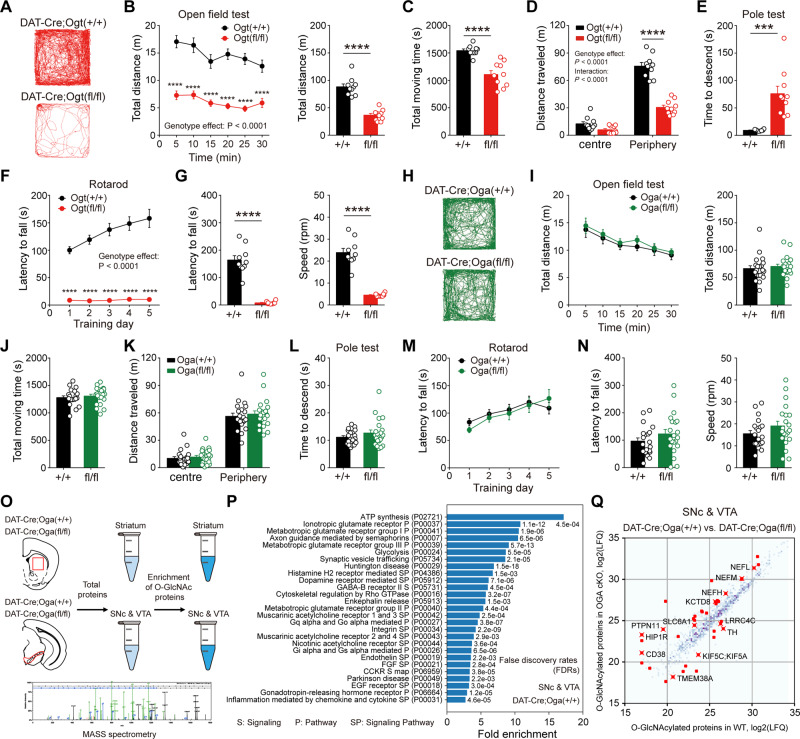Figure 5.
Manipulation of O-GlcNAcylation alters motor functions and the abundance of O-GlcNAcylated proteins. (A) Examples of movement path in the open field test in DAT-Cre;Ogt+/+ and DAT-Cre;Ogtfl/fl mice. (B and C) Locomotive behaviour by total distance travelled and total moving time. (D) Thigmotaxis behaviour in the open field test. (E) Motor coordination in the pole test. (F and G) Motor learning and coordination in the rotarod test during training days and test days. (H) Examples of movement path in the open field test in DAT-Cre;Oga+/+ and DAT-Cre;Ogafl/fl mice. (I and J) Locomotive behaviour by total distance travelled and total moving time. (K) Thigmotaxis behaviour in the open field test. (L) Motor coordination in the pole test. (M and N) Motor learning in the rotarod test during training days and test days. (O) Schematic illustration describing the sample preparation and mass spectrometry. (P) Pathways enriched in the identified proteins from SNc-VTA region with O-GlcNAcylation enrichment [>2-fold enrichment with the false discovery rate (FDR) <0.005]. (Q) Correlation of O-GlcNAcylation enriched protein abundance (LFQ intensity). We marked differentially abundant proteins between DAT-Cre;Oga+/+ and DAT-Cre;Ogafl/fl mice with a red colour (<0.5- or >2-fold changes with FDR <0.05). Data were analysed by repeated measures two-way ANOVA followed by Sidak’s post hoc test (B, D, F, I, K and M) and unpaired t-test (B, C, E, G, I, J, L and N). Data are represented as mean ± SEM. ***P < 0.001, ****P < 0.0001. WT = wild-type.

